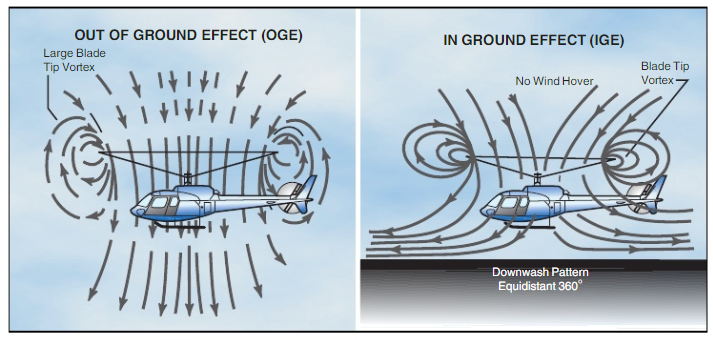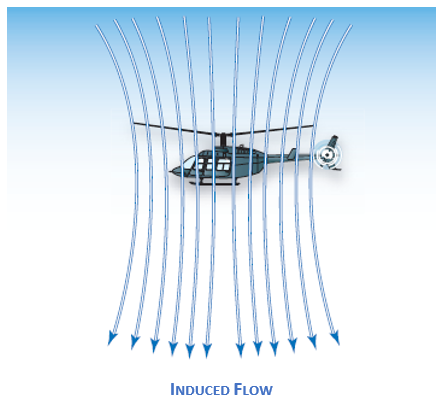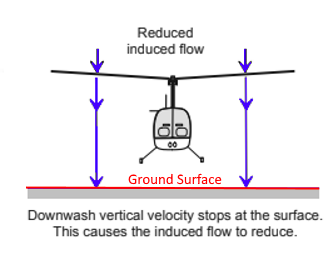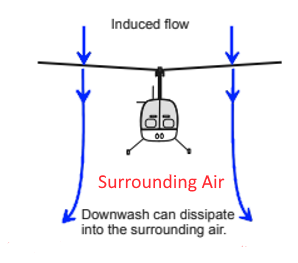¶ Introduction
Ground effect is the increased efficiency of the rotor system caused by interference of the airflow
In other words, the closer the helicopter is to the ground surface, the more the rotor efficiency increases
The helicopter can be:
- In Ground Effect (IGE)
- Out of Ground effect (OGE)

The In Ground Effect usually occurs when a helicopter is less than one rotor diameter above the surface
¶ Induced Flow (or Downwash)
To better understand the ground effect, it is important to know this phenomena because it has a crucial role in the attitude of the helicopter in ground effect (IGE) or out of ground effect (OGE)
When blade pitch angle is increased, a downward flow of air is induced through the rotor blades creating a downward component of air that is added to the rotational relative wind
Induced Flow is defined as the mass of air that is forced down by the rotor action

- when induced flow velocities increase, the Angle of Attack decreases and more power is needed to lift
- when induced flow velocities decrease, the Angle of Attack increases and less power is needed to lift
→ The Angle of Attack is defined in Forces acting on an airfoil
¶ Relation between induced flow and ground effect
¶ Hover in ground effect (IGE)
When hovering in ground effect, usually less than one rotor diameter above the surface, the Lift vector increases because:
- The surface friction reduces the induced airflow through the rotor disc
- Because the induced airflow is reduced, the angle of attack increases so less power is needed to generate the same amount of lift
Hovering in ground effect allows a lower rotor blade angle for the same amount of lift so it reduces the power required to hover

¶ Hover out of ground effect (OGE)
When hovering out of ground effect:
- The induced airflow is no longer restricted by the ground surface
→ the angle of attack decreases
→ the lift decreases
- A higher blade pitch angle is required to maintain the same angle of attack
→ increased pitch angle creates more drag
- More power is needed to hover
Hovering out of ground effect requires highter rotor blade angle for the same amount of lift so it increases the power required to hover

As it is not possible for the pilot to change directly the angle of attack (as explained in Forces acting on an airfoil), the ground effect is a theoretical knowledge important to understand the practice but the flight techniques are not explained in this article
- Principles of helicopter flight, 2nd Edition
- FAA helicopter Flying Handbook
- Rotorcraft Flying Handbook
- Introduction to helicopter aerodynamics
- VID 514786 - Creation
- VID 496402 - Wiki.js integration